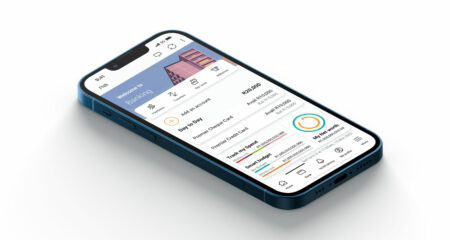
[By Arno du Toit]
First National Bank has certainly fired the opening salvo when it comes to mobile banking in SA, with its launch this week of mobile banking applications for iOS, Android and Blackberry. These applications complement an established and popular cellphone banking service from the company.
FNB is the first of the big four to venture into the banking application realm, although it is not the first in SA as it claims. Imbongi Capital has offered a full suite of banking applications since 2010. The other SA banks would do well to sit up and take note, as it is clear that deploying banking applications is no longer a matter “if” but “when”.
However, they can learn from how FNB has deployed its applications, and consider alternative, faster, cheaper and more scalable ways of building applications than doing so one by one with an in-house team, which is what it appears FNB has done.
According to a recent World Wide Worx report, 37% of South Africans with a cellphone use mobile banking services. But whether they use an entry-level phone with basic Internet access or the latest high-end smartphone, up until this week they were all offered the same services, running over a technology called USSD and or using the mobile Web. Many South Africans are familiar with USSD — it is the menu based text system that can be used to check balances and top-up with airtime.
Of course it makes sense at the lower end of the market to offer a service that works across the board on all entry-level phones. This is vital to provide banking services to people who do not have access to the internet or who live some distance from traditional banking infrastructure. But choosing a lowest common denominator approach does result in a sector of the market without a choice about how they interact with their banks and also having to deal with a less than optimum user experience compared to the apps they are used to on a high-end device.
As well as an improved user experience, FNB’s new application includes a handy tool using the phone’s built in GPS to find the user’s closest ATM or branch, and also offers free voice-over-Internet Protocol calls to any number of the bank’s call centres.
As good a job as FNB has done with its apps, there are some things it might have done better, and some future issues it could have avoided.
Firstly, it has launched three disparate apps to cater for three operating systems, with a fourth “coming soon”. These distinct applications will have to be maintained and developed individually — a pretty intensive and expensive process. Also, as new mobile operating systems are launched and start gaining market share — think Windows Mobile 7 — these will have to rapidly be launched, preferably with all the services being offered by the other applications.
Another challenge application developers have is to make sure the application works across all devices available running a specific operating system. Already, according to the reviews on BlackBerry’s Appworld, a user has complained that not all devices are supported. This points to just how non-standardised the smartphone world is, and also, in my opinion, lack of enterprise application development experience in the market — this is a new space still, after all.
Having said that, it’s not about choosing one technology over another on behalf of the customer and forcing them to engage with a company in a certain way. In an ideal world, banks should allow their customer to interact with them safely and conveniently over whichever channels they choose, with the best user experience and functionality.
It is possible to roll out mobile banking applications on most phones with Internet access available since 2003. These application-based services are far more secure than both USSD and mobile Web banking options, offering US National Institute of Standards and Technology (Nist)-approved security levels and more capabilities than USSD.
Banks must apply the same selection criteria to their mobile vendors as they do to any other technology vendor. They must ensure their mobile vendor has the experience and ability to offer bank-grade reliability and security. Basically, you do not get an Angry Bird developer to build you a banking app!
Given the current economic conditions, mobile banking provides a win-win situation for both banks and customers. It ticks all the boxes in terms of business drivers for the banks when compared to traditional channels: a lower cost of service; improved competitiveness; improved customer acquisition and retention; and a launchpad for future products and services. For customers, it means they can closely track their finances and even transact on the go, whenever they like and for free, or at a lower cost than traditional banking channels.
In SA, where the primary Internet device is a cellphone, mobile banking is a no-brainer. There is no denying that the customer is ready. Let’s take the next step now and deploy mobile banking services across all devices in the most relevant way. By giving their customers this freedom, I believe the banks will be pleasantly surprised by the user patterns and uses that evolve.
- Arno du Toit is co-founder of Virtual Mobile Technologies
- Subscribe to our free daily newsletter
- Follow us on Twitter or on Facebook



